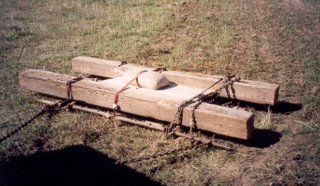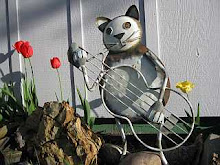In addition to the hayfield where the majority of the pocket gophers are (were), I also drug the harrow through most of the pastures. The north pastures have the least amount of trees, the shortest grass, and is the smoothest, so it wasn't too bad to do. The south pasture was next. Taller grass and more trees and not quite as smooth. The middle pasture is the roughest, has the most trees and many tree stumps, and the tallest grass. I did a little bit of this pasture before quiting. I decided I would try to burn the grass first to make it easier to drag the harrow and also easier to see the low tree stumps.
Now don't let me give you the impression this was quick. I pulled the harrow at an average speed of 7 mph for hours a day over a number of days, and drove quite a few miles going in circles. Around and around and around...
 This year, unlike the past years, was wetter so I didn't raise a cloud of dust.
This year, unlike the past years, was wetter so I didn't raise a cloud of dust.While it is supposedly good to aerate the soil I can definitely see the difference in areas I harrowed and areas I did not. Today in the NE pasture I noticed a big difference in the grass between the harrowed and unharrowed areas. Raking the soil with a harrow certainly stresses the grass in the short term.
Here are two photos of the harrow from a few years ago. As I am not going over a plowed field the extra weight is to give the harrow's teeth some bite into the ground. Time has taken its toll on the harrow as it is missing a number of its teeth these days.




No comments:
Post a Comment